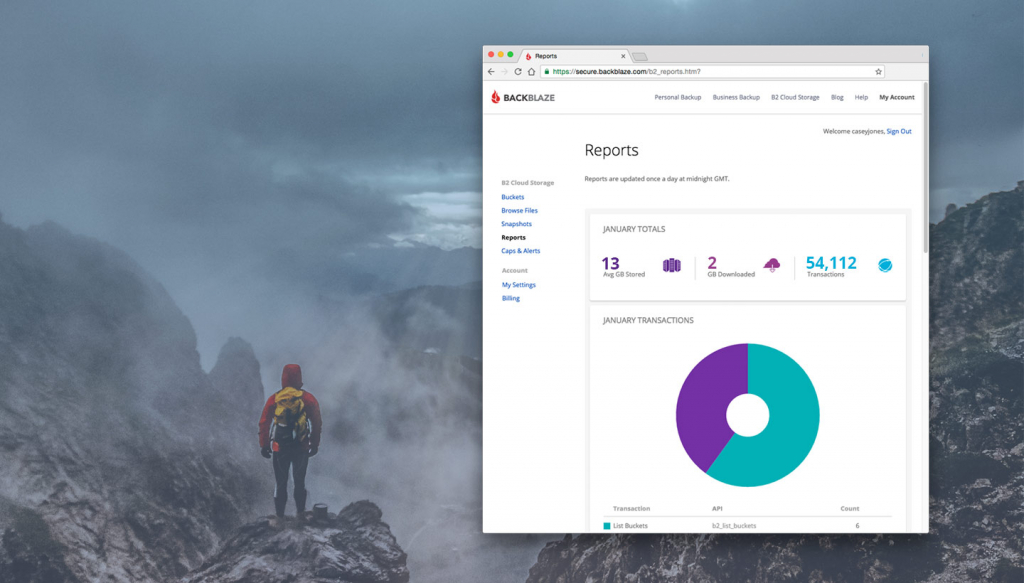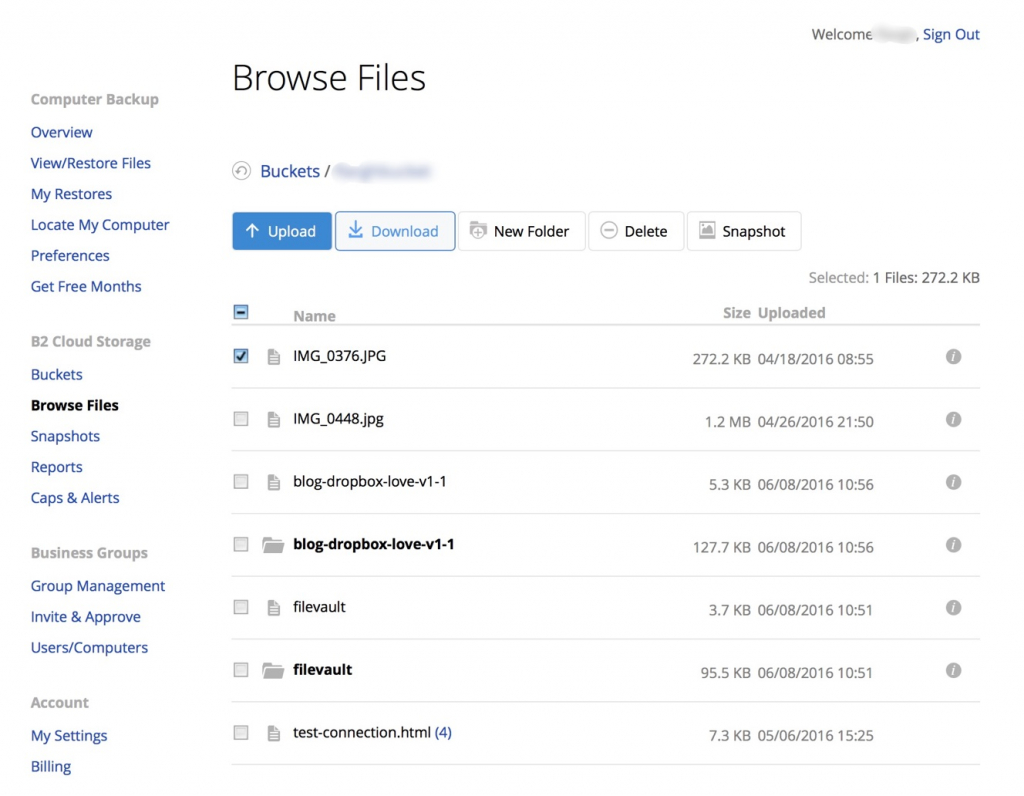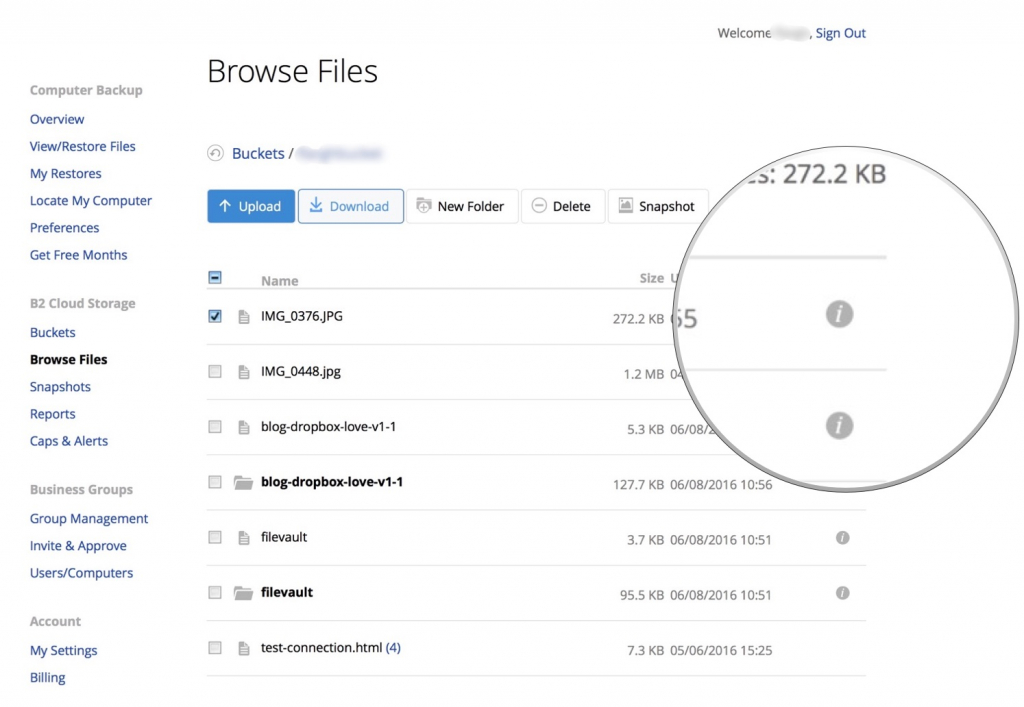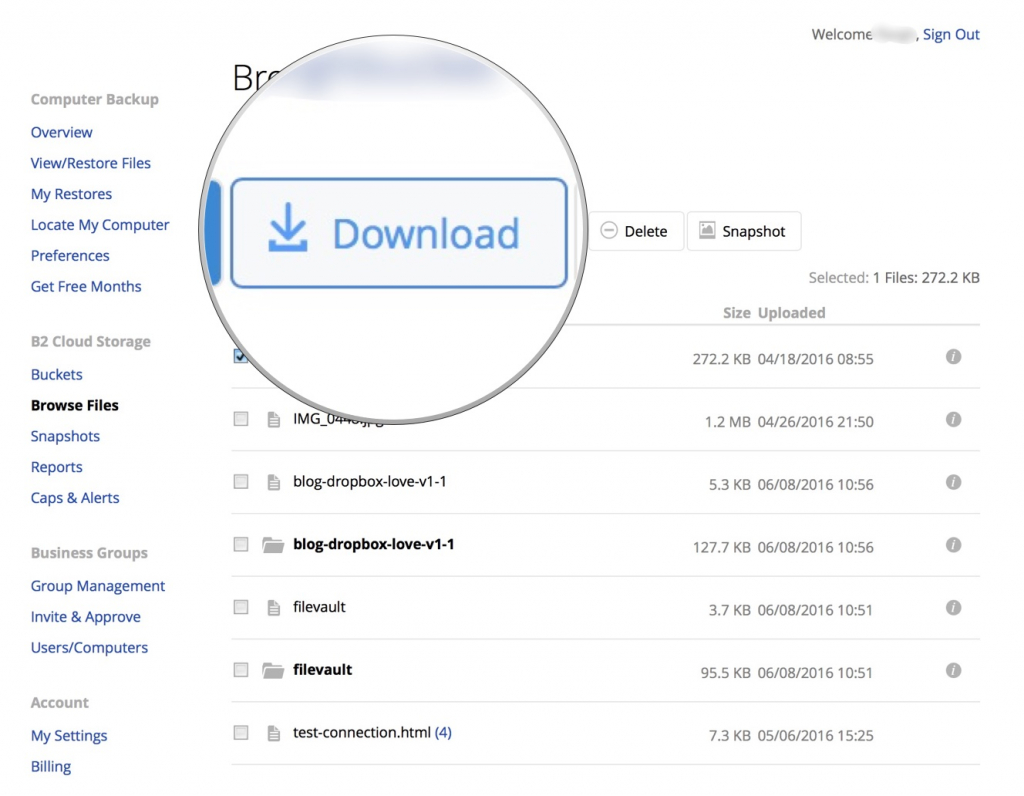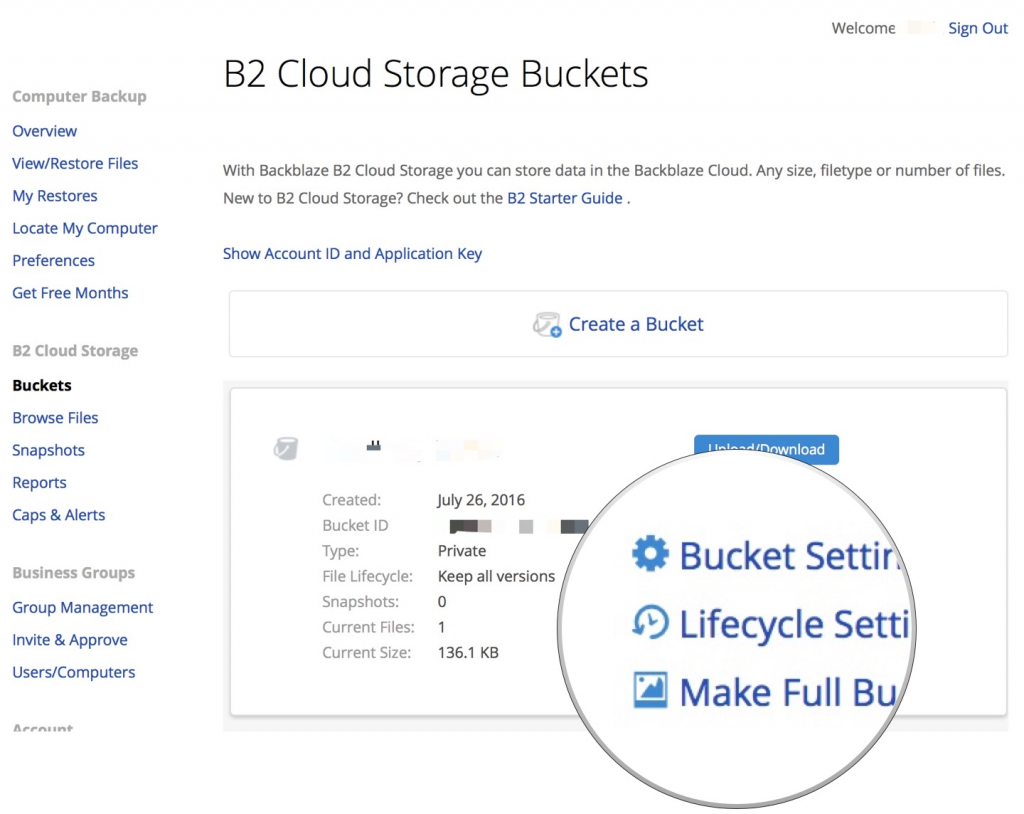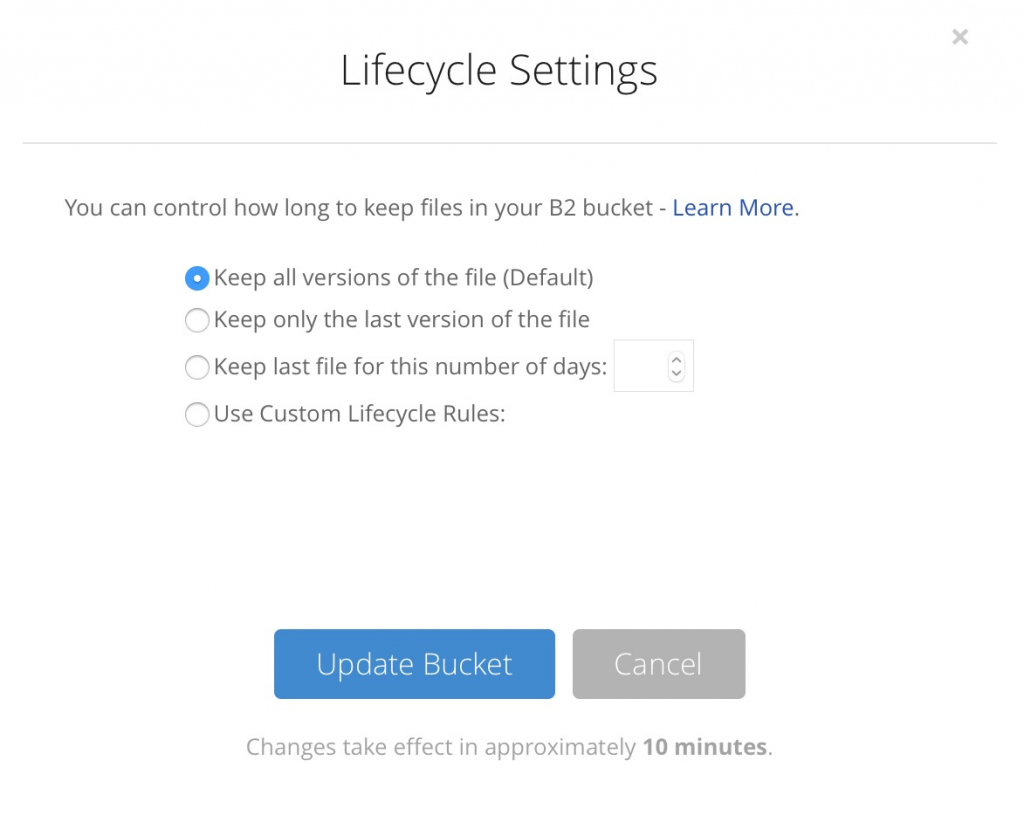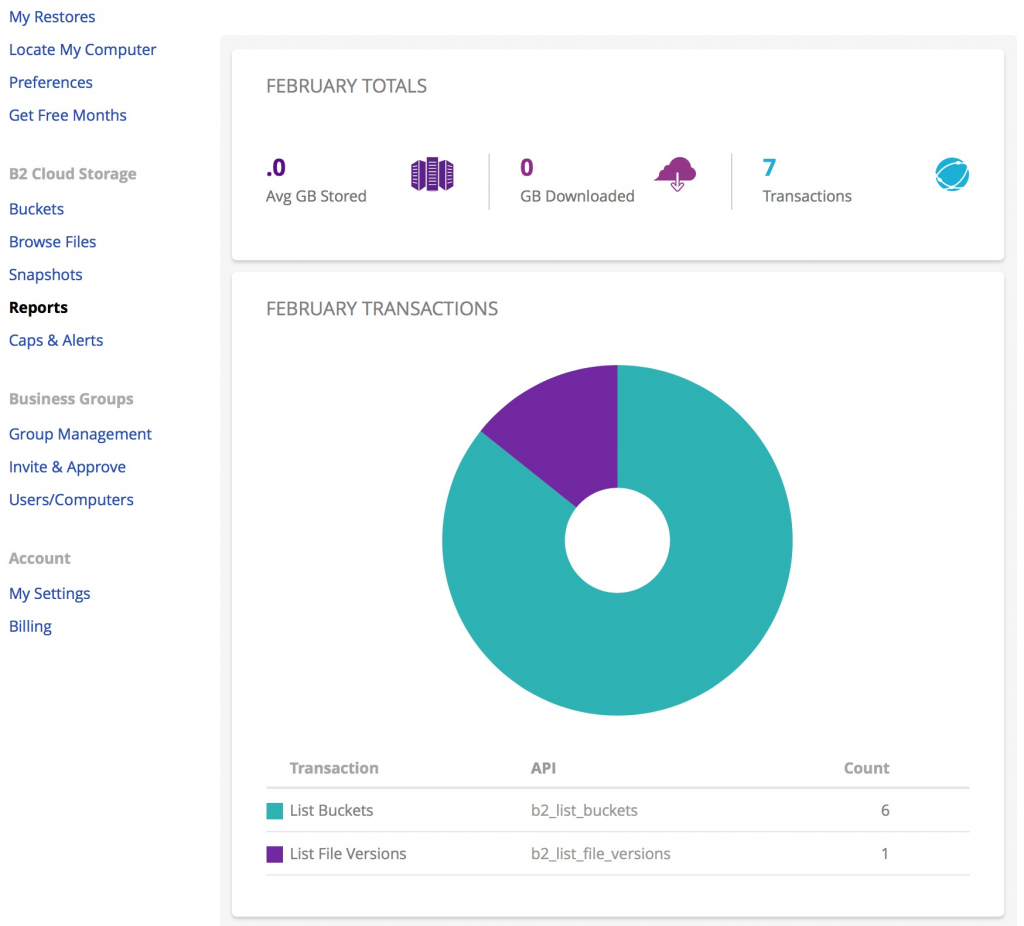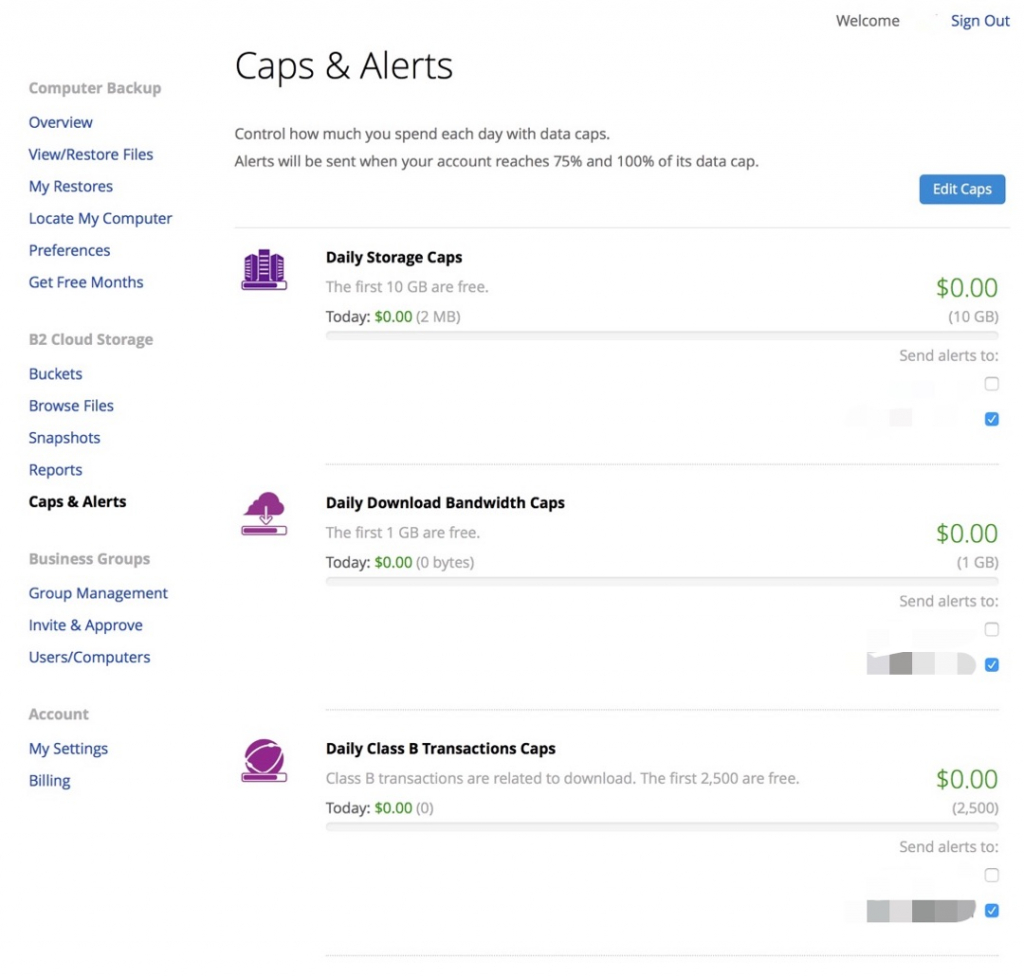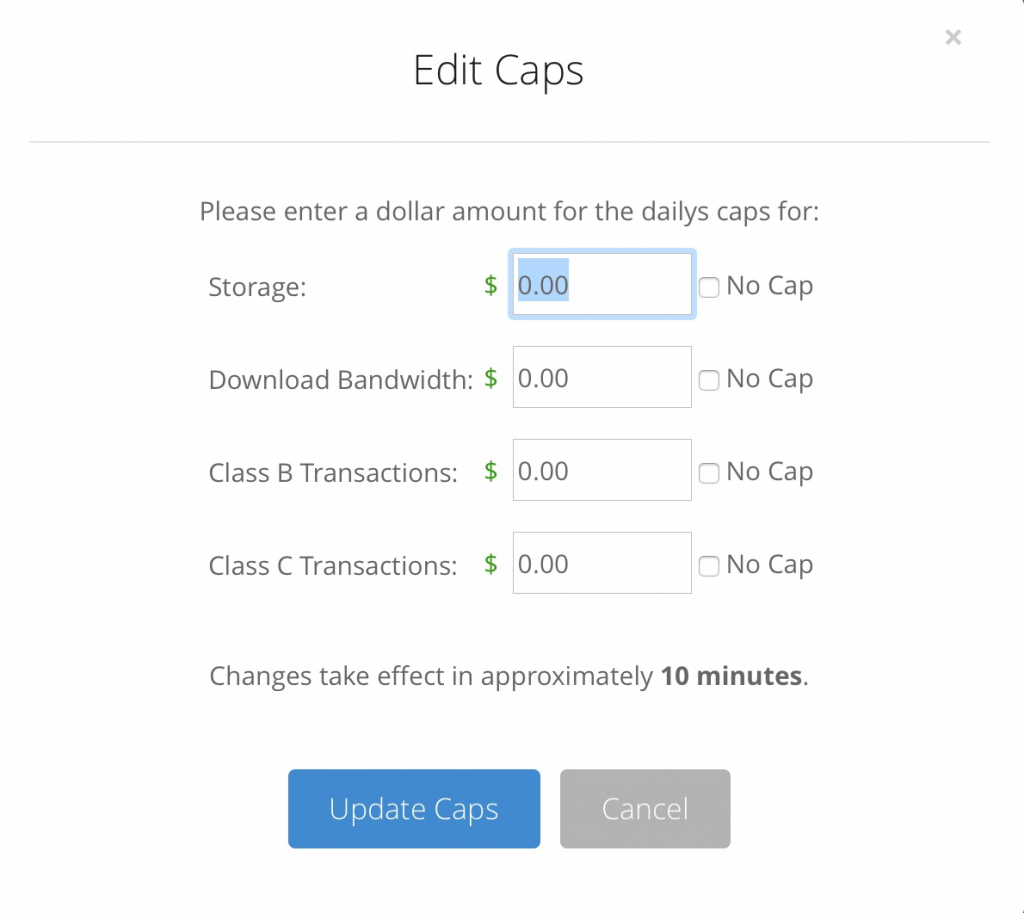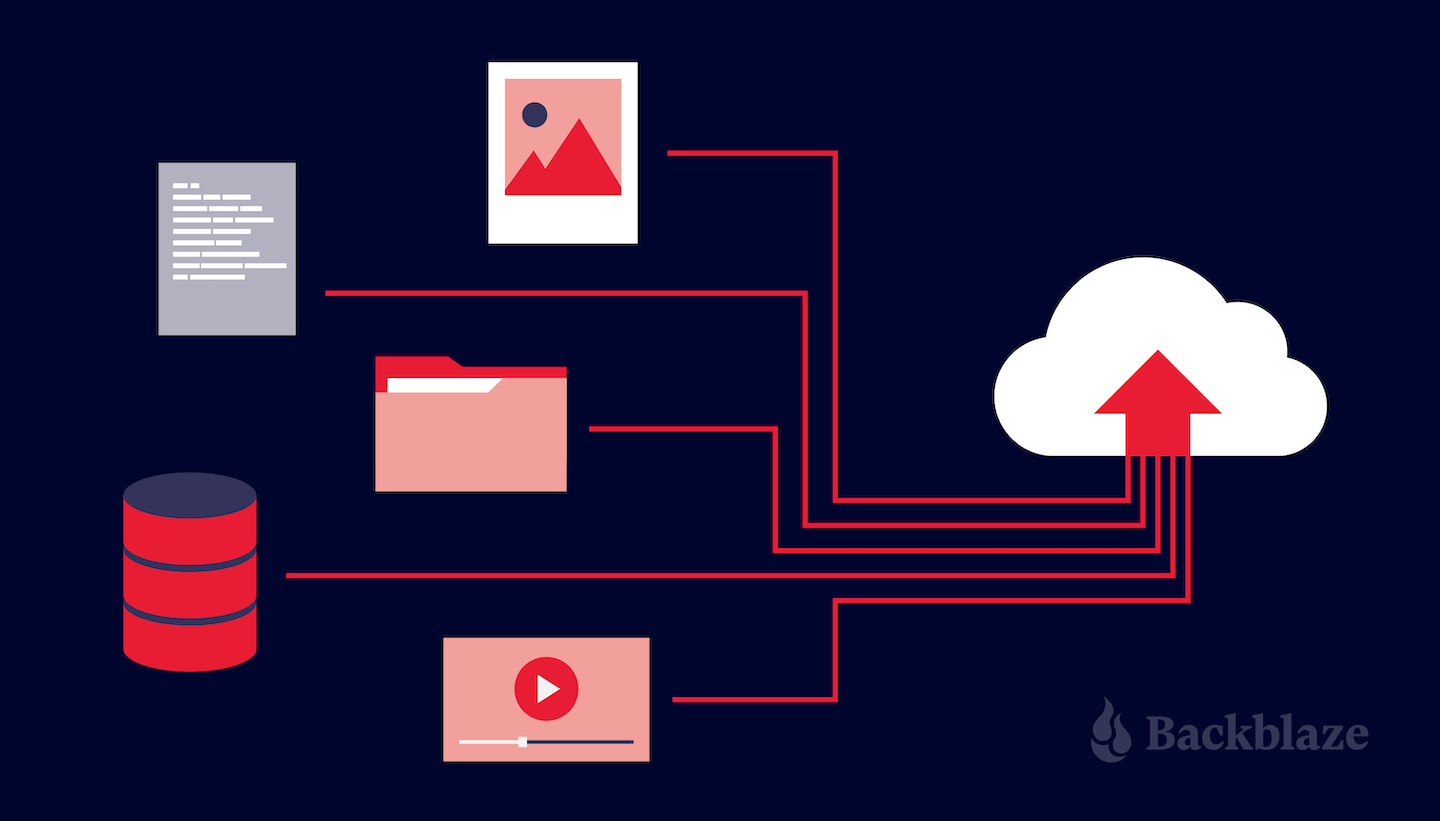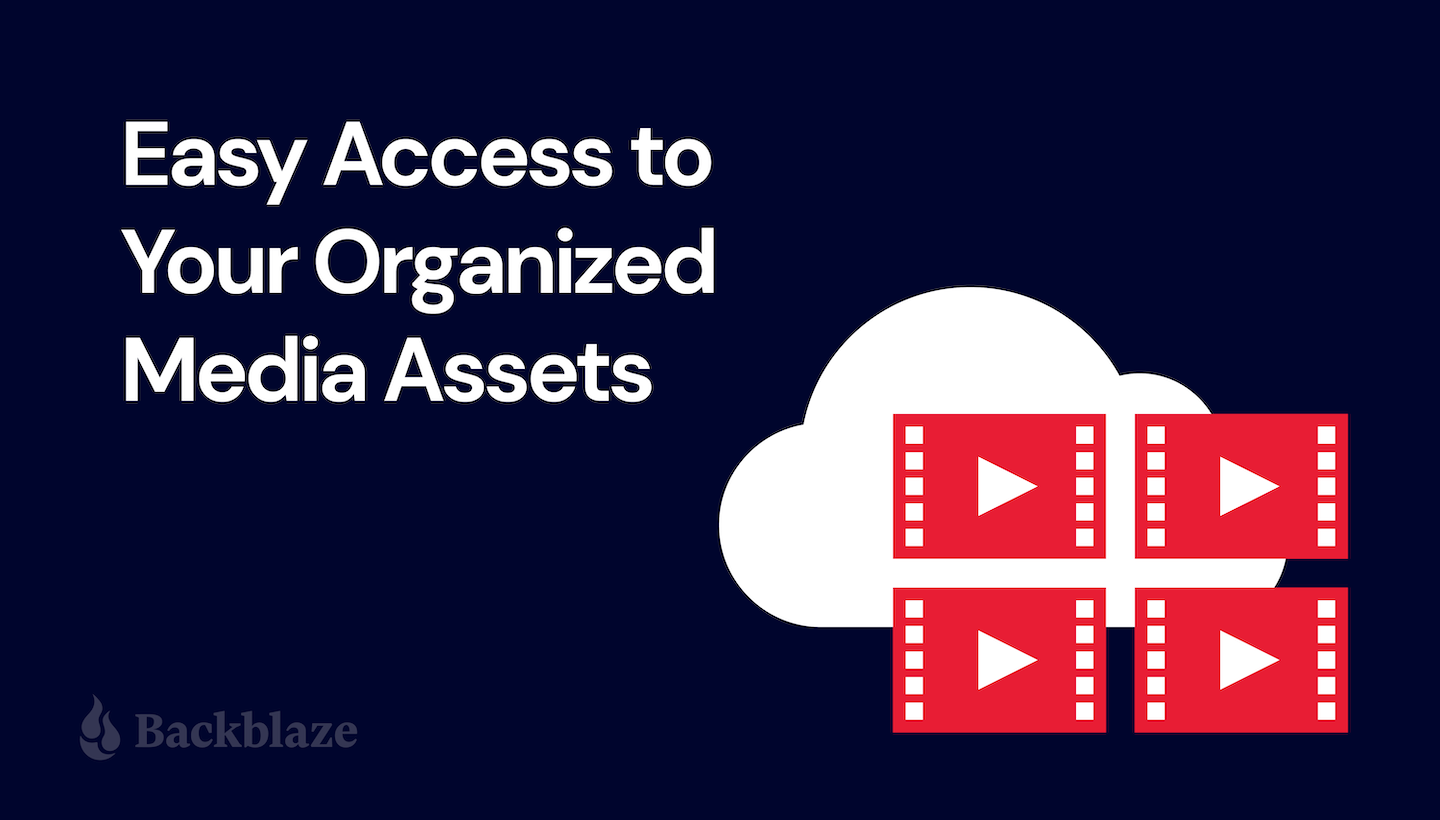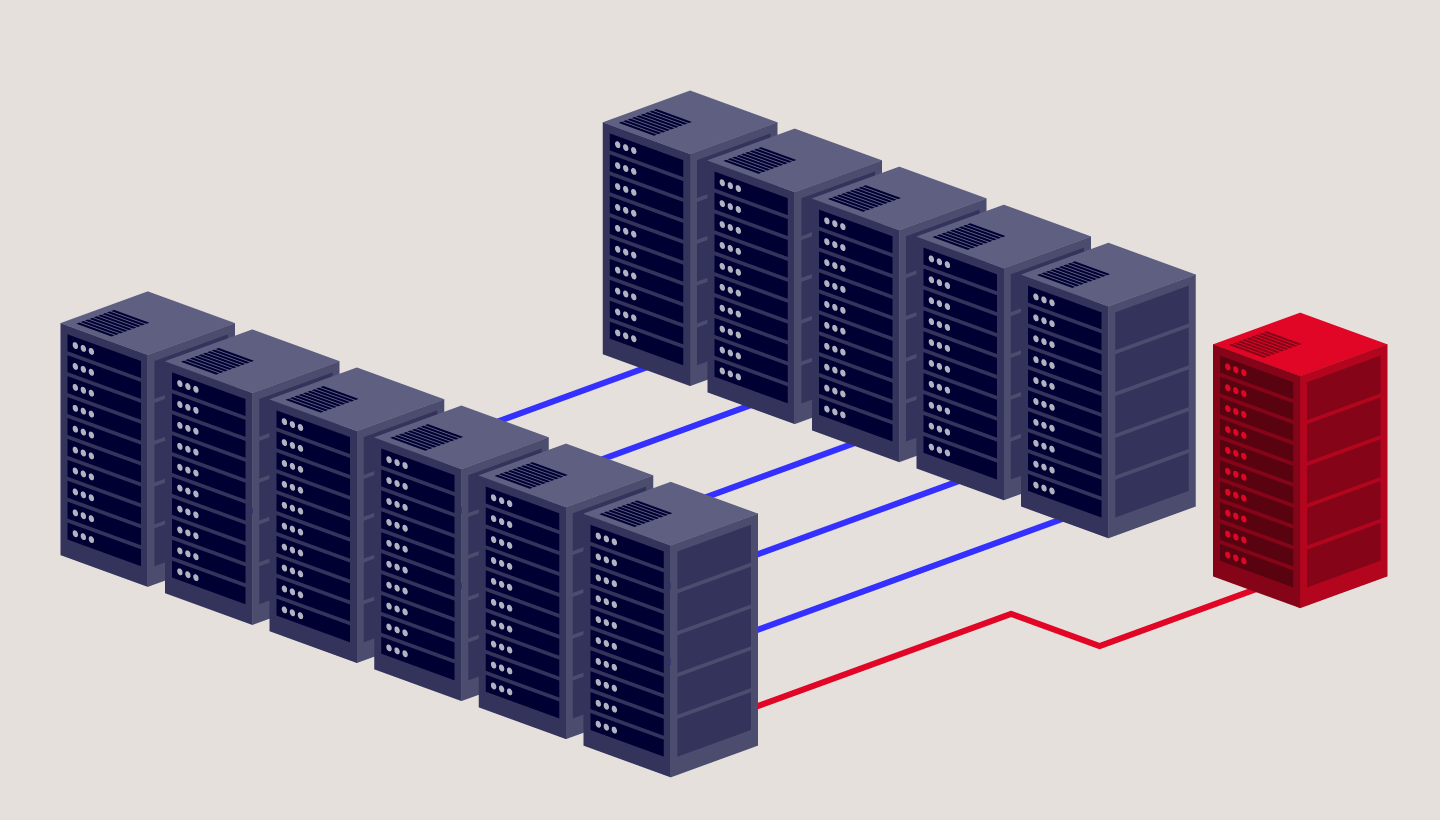Backblaze B2 Cloud Storage enables you to store data in the cloud at a fraction of what you’ll pay other services. For instance, we’re one-fourth of the price of Amazon’s S3. We’ve made it easy to access thanks to a web interface, API, and command line interface. Let’s get to know the web interface a bit better, because it’s the easiest way to get around Backblaze B2 and it’s a good way to get a handle on the fundamentals of B2 Cloud Storage use.
Anyone with a Backblaze account can set up Backblaze B2 access by visiting My Settings. Look for Enabled Products and check B2 Cloud Storage.
Backblaze B2 is accessed the same way as your Backblaze Computer Backup. The sidebar on the left side of your My Account window shows you all the Backblaze services you use, including Backblaze B2. Let’s go through the individual links under B2 Cloud Storage to get a sense of what they are and what they do.
Buckets
Data in B2 Cloud Storage is stored in buckets. Think of a bucket as a top-level folder or directory. You can create up to 100 buckets per account. In each bucket, you can store as many files as you want. Buckets can contain files of any type and a file can be up to 10TB in size.
Third-party applications and services can integrate with B2 Cloud Storage, and many already do. The Buckets screen is where you can get your Account ID information and create an application key—a unique identifier your apps will use to securely connect to Backblaze B2. If you’re using a third-party app that needs access to your bucket, such as a NAS backup app or a file sync tool, this is where you’ll find the information you need to connect. (We’ll have more information about how to back up your NAS to Backblaze B2 very soon!)
The Buckets window lists the buckets you’ve created and provides basic information including creation date, ID, public or private type, lifecycle information, number of files, size, and snapshots.
Click the Bucket Settings link to adjust each bucket’s individual settings. You can specify if files in the bucket are public or private. Private files can’t be shared, while public ones can be.
You can also tag your bucket with customized information encoded in JSON format. Custom info can contain letters, numbers, “-“, and “_”.
Browse Files
Click the Upload/Download button to see a directory of each bucket. Alternately, click the Browse Files link on the left side of the B2 Cloud Storage interface.
You can create a new subdirectory by clicking the New Folder button, or begin to upload files by clicking the Upload button. You can drag and drop files you’d like to upload and Backblaze will handle that for you. Alternately, clicking on the dialog box that appears will enable you to select the files on your computer you’d like to upload.
Next to each individual file is an information button. Click it for details about the file, including name, location, kind, size, and other details. You’ll also see a “Friendly URL” link. If the bucket is public and you’d like to share this file with others, you may copy that Friendly URL and paste it into an email or message to let people know where to find it.
You can download the contents of your buckets by clicking the checkbox next to the file name and clicking the Download button. You can also delete files and create snapshots. Snapshots are helpful if you want to preserve copies of your files in their present state for some future download or recovery. You can also create a snapshot of the full bucket. If you have a large snapshot, you can order it as a hard drive instead of downloading it. We’ll get more into snapshots in a future blog post.
Lifecycle Settings
We recently introduced Lifecycle Settings to keep your buckets from getting cluttered with too many versions of files. Our web interface lets you manage these settings for each individual bucket.
By default, the bucket’s lifecycle setting is to keep all versions of files you upload. The web interface lets you adjust that so B2 Cloud Storage only keeps the last file version, keeps the last file for a specific number of days, or keeps files based on your own custom rule. You can determine the file path, the number of days until the file is hidden, and the number of days until the file is deleted.
Reports
Backblaze updates your account daily with details on what’s happening with your B2 Cloud Storage files. These reports are accessible through the Backblaze B2 interface under the Reports tab. Clicking on reports will reveal an easy to understand visual charge showing you the average number of gigabytes stored, total gigabytes downloaded, and total number of transactions for the month.
Look further down the page for a breakdown of monthly transactions by type, along with charts that help you track average gigabytes stored, gigabytes downloaded, and count of average stored files for the month.
Caps and Alerts
One of our goals with B2 Cloud Storage was to take the surprise out cloud storage fees. The Backblaze B2 web GUI sports a Caps & Alerts section to help you control how much you spend on Backblaze B2.
This is where you can see—and limit—daily storage caps, daily downloads, and daily transactions. “Transactions” are interactions with your account like creating a new bucket, listing the contents of a bucket, or downloading a file.
You can make sure to send those alerts to your cell phone and email, so you’ll never be hit with an unwelcome surprise in the form of an unexpected bill. The first 10GB of storage is free, with unlimited free uploads and 1GB of free downloads each day.
Click the Edit Caps button to enter dollar amount limits for storage, download bandwidth, and Class B and Class C transactions separately (or specify No Cap if you don’t want to be encumbered). This way, you maintain control over how much you spend with Backblaze B2.
And There’s More
That’s an overview of the B2 Cloud Storage web GUI to help you get started using B2 Cloud Storage. If you’re more technical and are interested in connecting to Backblaze B2 using our API instead, make sure to check out our Backblaze B2 Starter Guide for a comprehensive overview of what’s under the hood.
Still have questions about the B2 Cloud Storage web GUI, or ideas for how we can make it better? Fire away in the comments, we want to hear from you!


